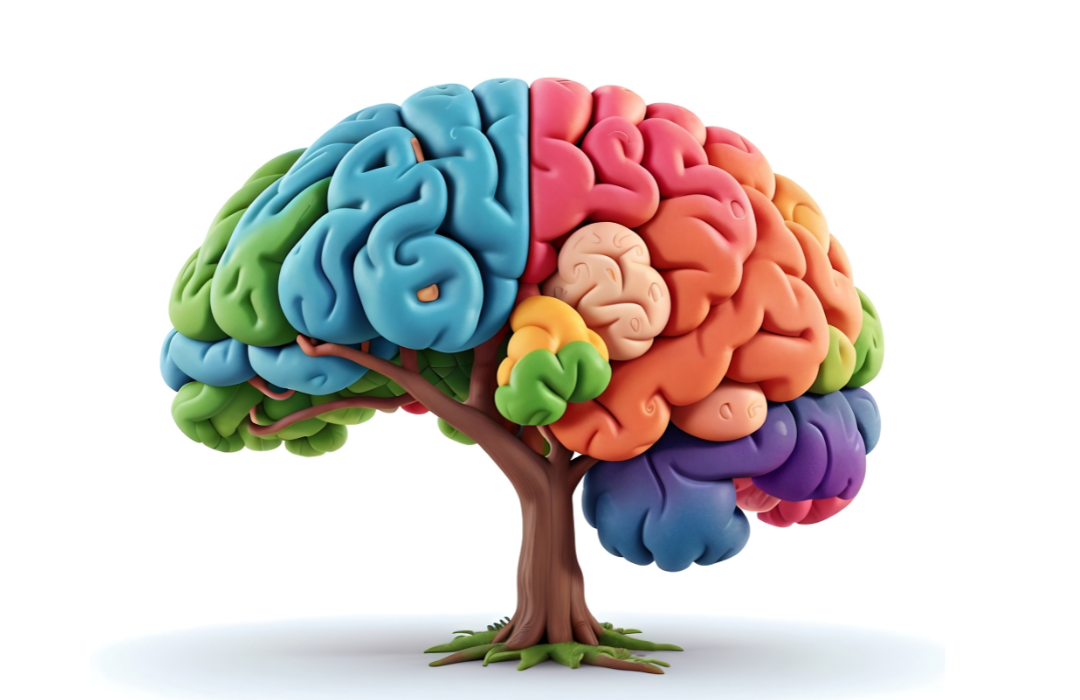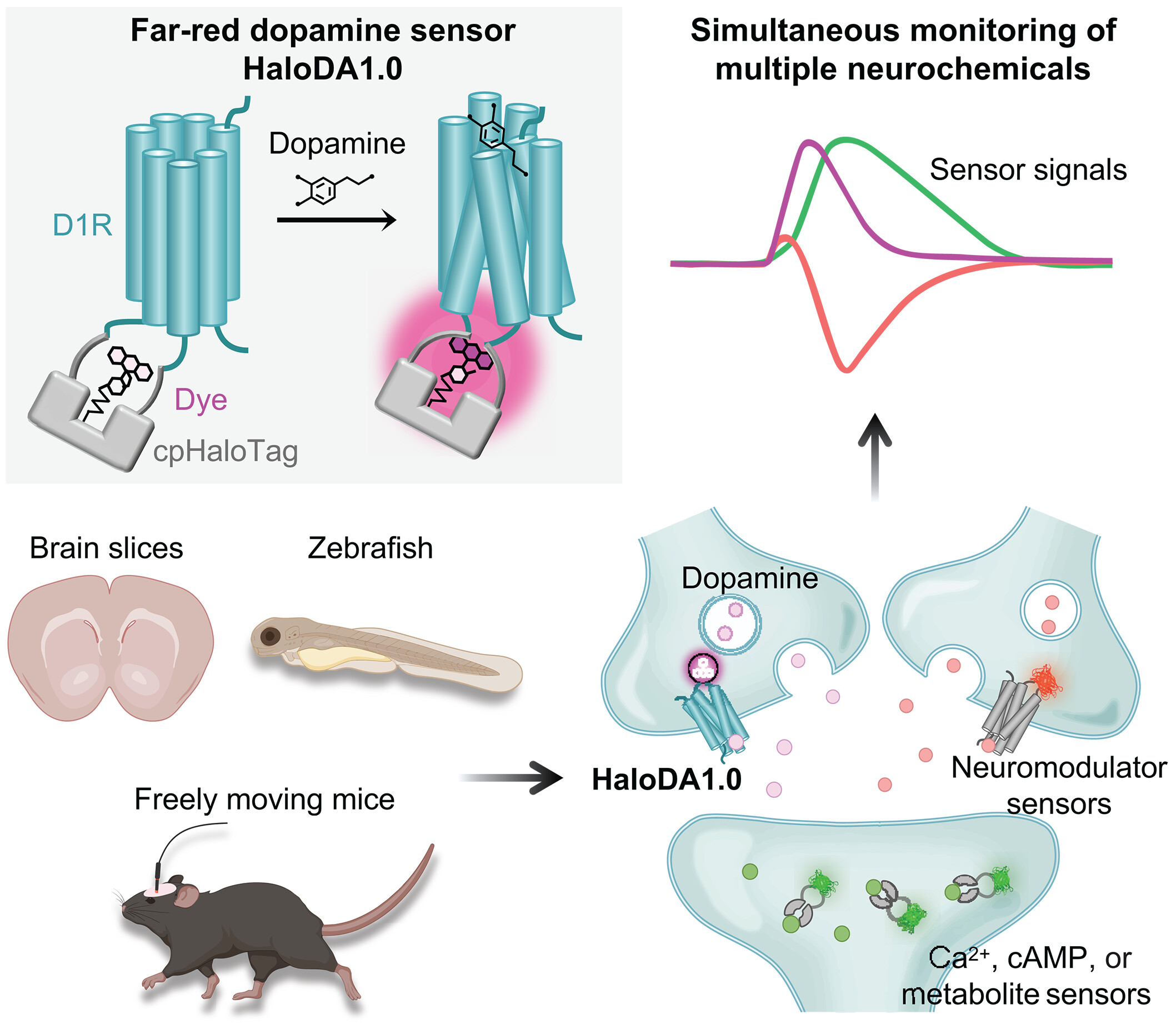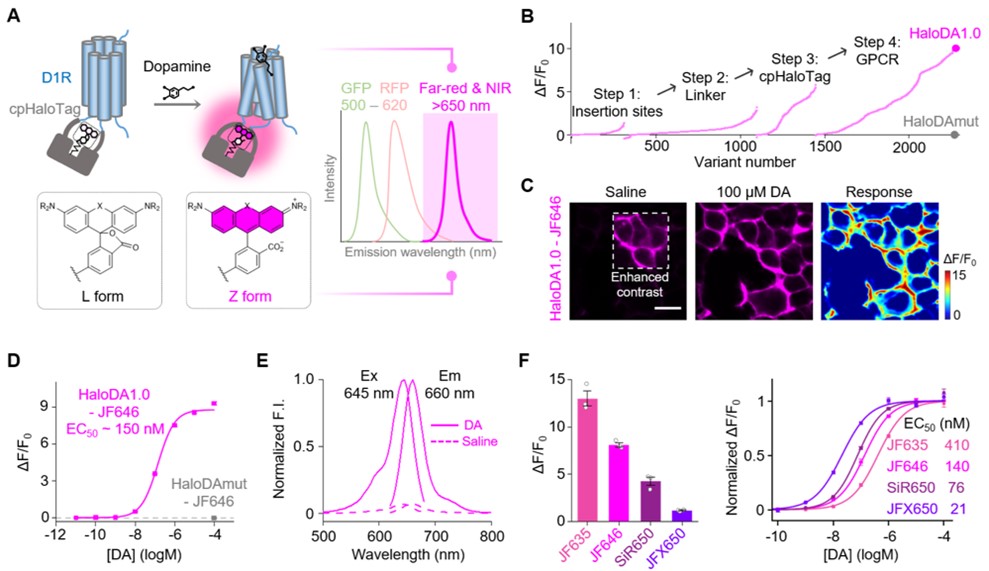
Peking University, June 16, 2025: A multidisciplinary team led by Professor Li Yulong from the School of Life Sciences at Peking University has developed a far-red fluorescent dopamine (DA) probe that enables real-time, multiplex imaging of neurotransmitters in the living brain. Published in Science under the title “In vivo multiplex imaging of dynamic neurochemical networks with designed far-red dopamine sensors,” the study marks a breakthrough in chemogenetic probe design. The newly developed sensor allows researchers to simultaneously track dopamine and other neurochemical signals with high precision across multiple biological systems.
Background
The human brain is an extraordinarily complex organ, composed of billions of neurons that communicate through a wide array of neurotransmitters. Among them, dopamine plays a central role in regulating reward, learning, and motor control, often interacting with other neurochemicals such as acetylcholine, serotonin, and intracellular messengers like calcium and cyclic adenosine 5′-monophosphate cyclic (cAMP). These components form a tightly regulated, dynamic signaling network. However, monitoring the real-time interplay of multiple neurotransmitters within a living brain has remained a major technical challenge, limiting our understanding of how these signals coordinate behavior and cognition.
Why it matters
While existing imaging tools can capture one or two neurotransmitters at a time, they fall short in revealing the full complexity of neurochemical signaling. This limitation has slowed progress in understanding how networks of neurotransmitters orchestrate brain function and how their dysregulation contributes to neurological and psychiatric disorders. A tool that allows for real-time, multicolor imaging of multiple neurotransmitters in vivo represents a significant advancement for both basic neuroscience and translational research.

Development and applications of a far-red dopamine sensor for simultaneous monitoring of multiple neurochemicals.
Key Findings
In this landmark study, Professor Li Yulong’s team introduced HaloDA1.0, which combines a cpHaloTag–chemical dye approach with the G protein–coupled receptor activation–based (GRAB) strategy, providing high sensitivity for DA, subsecond response kinetics, and a far-red to near-infrared spectral range. The probe exhibits strong fluorescence responses (up to 900%), sub-second kinetics, and high dopamine specificity without coupling to downstream signaling pathways. Crucially, it is compatible with existing green and red fluorescent sensors, enabling three-color imaging. The researchers applied this system to various models, including cultured neurons, acute brain slices, zebrafish, and live mice, demonstrating simultaneous tracking of dopamine alongside other neurochemical signals such as norepinephrine, serotonin, acetylcholine, ATP, calcium, and cAMP. These experiments uncovered dynamic interactions among neurotransmitters during behaviors like reward-seeking, seizure activity, and drug exposure.

Development and Characterization of Far-Red Dopamine Probes.
Future Implications
HaloDA1.0 represents a powerful step forward in neuroimaging, enabling the high-resolution, real-time tracking of multiple chemical messengers in the living brain. It opens new avenues for investigating how neurotransmitters interact in both healthy and disease states and lays the groundwork for developing similar far-red probes targeting other neurochemicals. As a platform technology, this innovation pushes the boundaries of what’s possible in brain research and could have wide-ranging implications for understanding the molecular basis of cognition, emotion, and neurological disorders.
*This article is featured in PKU News "Why It Matters" series. More from this series.
Read more: https://www.science.org/doi/10.1126/science.adt7705
Written by: Akaash Babar
Edited by: Zhang Jiang
Source: PKU News (
Chinese)


